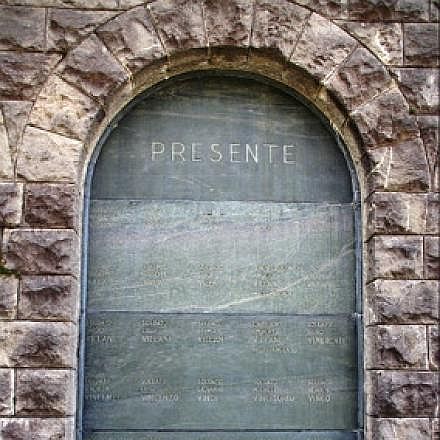
In the United States we observe Veterans Day on November 11, the date of Germany’s formal surrender at the end of World War 1. To be precise, the ceasefire took effect at 11:11 on November 11. We called it Armistice Day when I was a sprout, but now the date recognizes veterans of all wars.
The war between Italy and Austria-Hungary, however, came to an end on November 3, when the ceasefire was signed at the Villa Giusti outside Padova, to take effect on November 4. That date has long been observed here as a national day of remembrance, though by the end of it all, the warring parties had signed no fewer than 16 peace treaties.
It’s bad enough to know who were the casualties, but the nameless ones are what haunt me. In 1921, Italy consecrated its national Tomb of the Unknown Soldier, in Rome, and this year marked its hundredth-year anniversary. There are military shrines (sacrario) all over Italy and it is appalling how many of their soldiers are unknown. The monument in Gorizia notes 57,741 Italian casualties, of which 36,000 are unknown. At the shrine at Redipuglia are 100,000 fallen, and 60,000 unknown. At Asiago are 54,286 dead of which 33,000 are unknown. Obliterated.
Which brings me to the sacrario crowning Monte Grappa. The Grappa massif was the site of some of the war’s most violent battles, and where the Austrian advance into Italy was finally stopped.
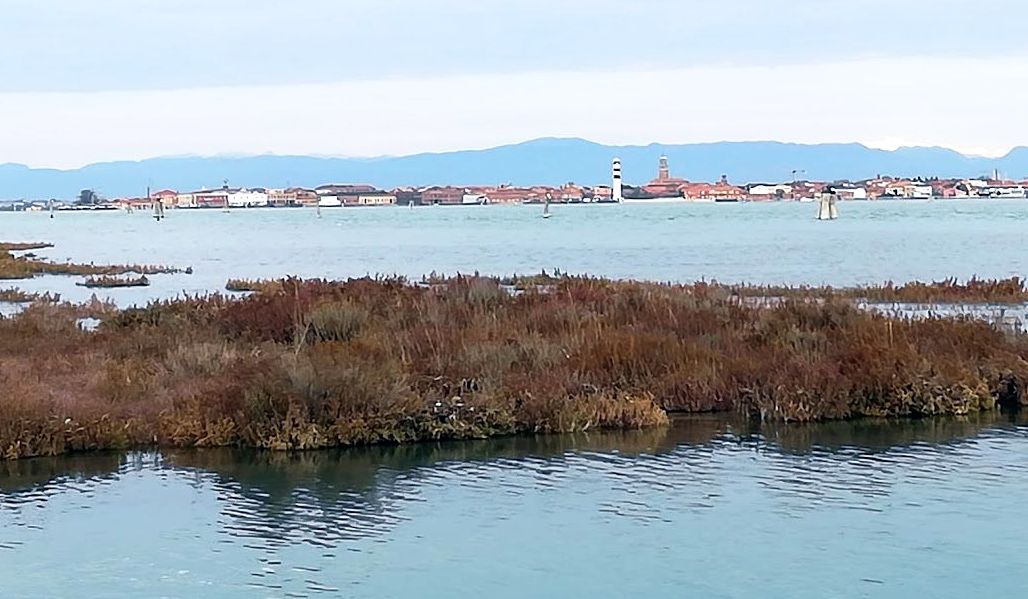
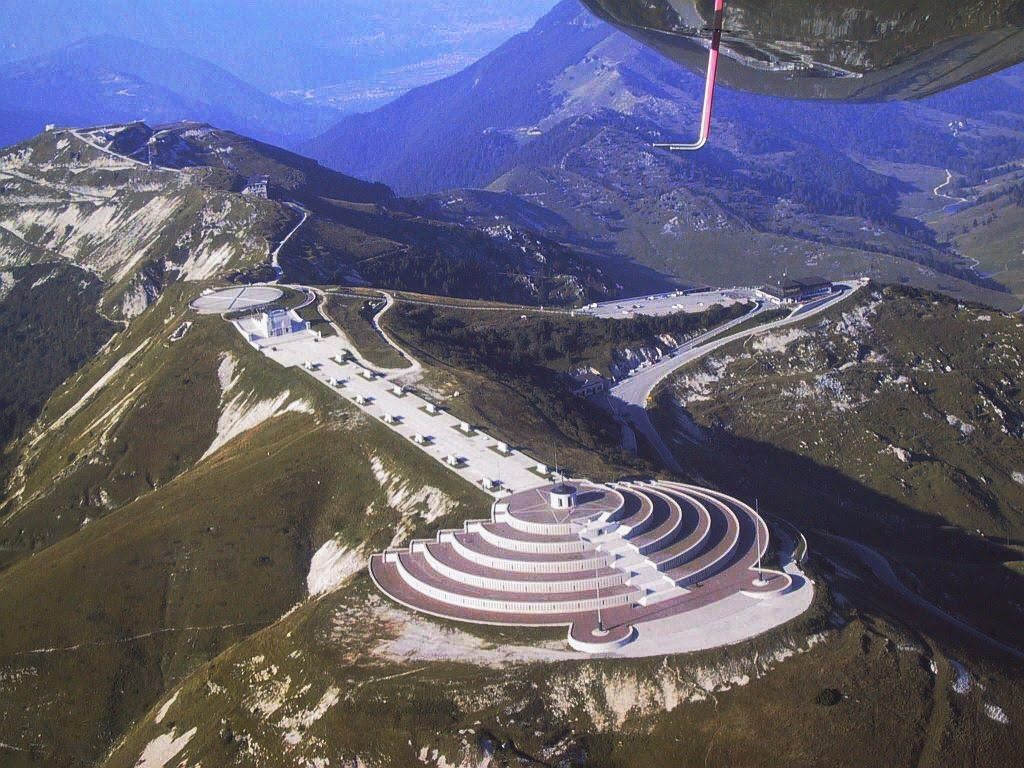


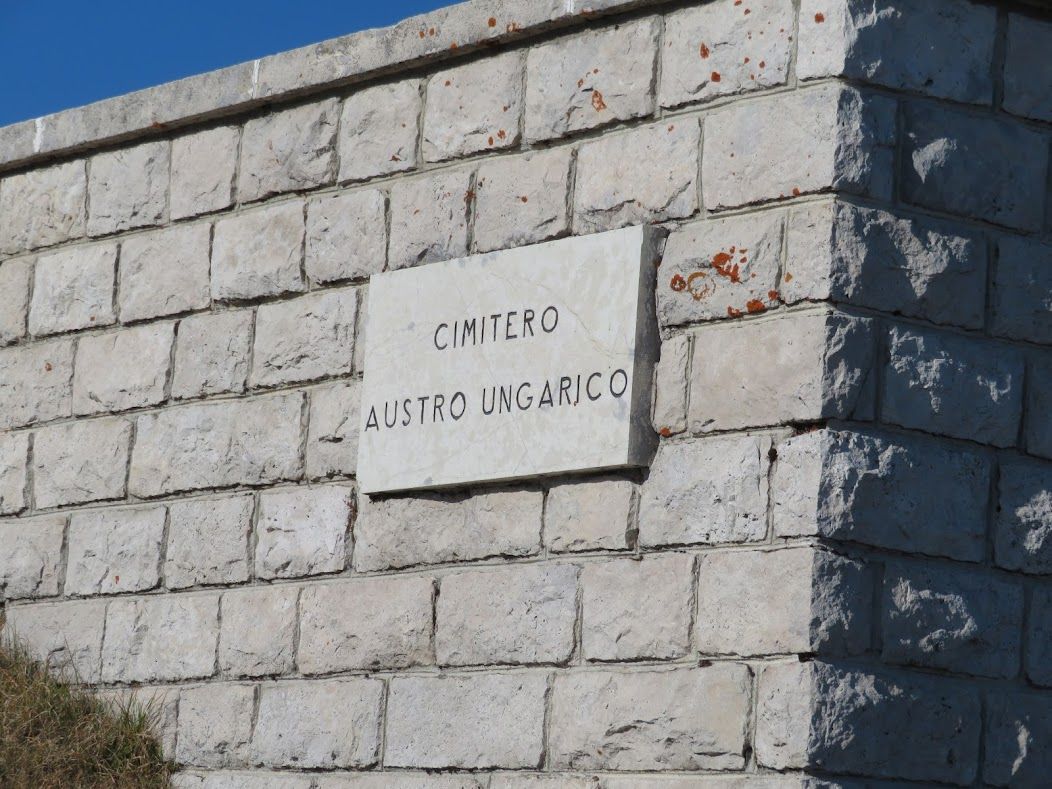
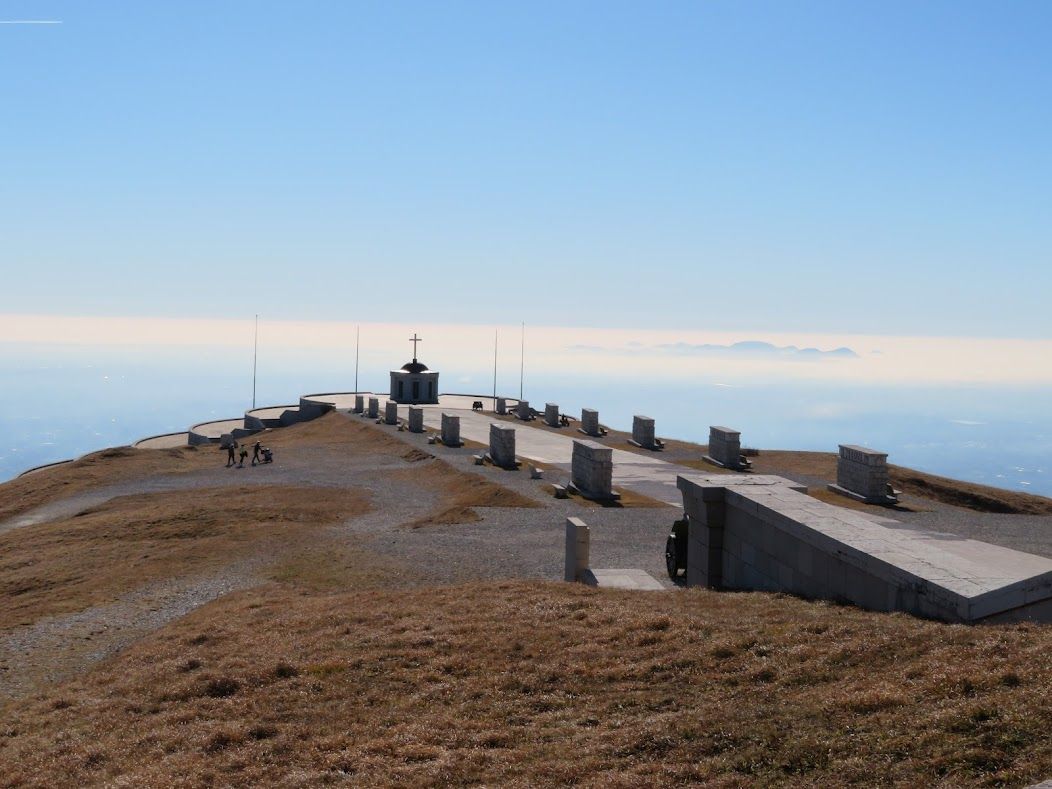
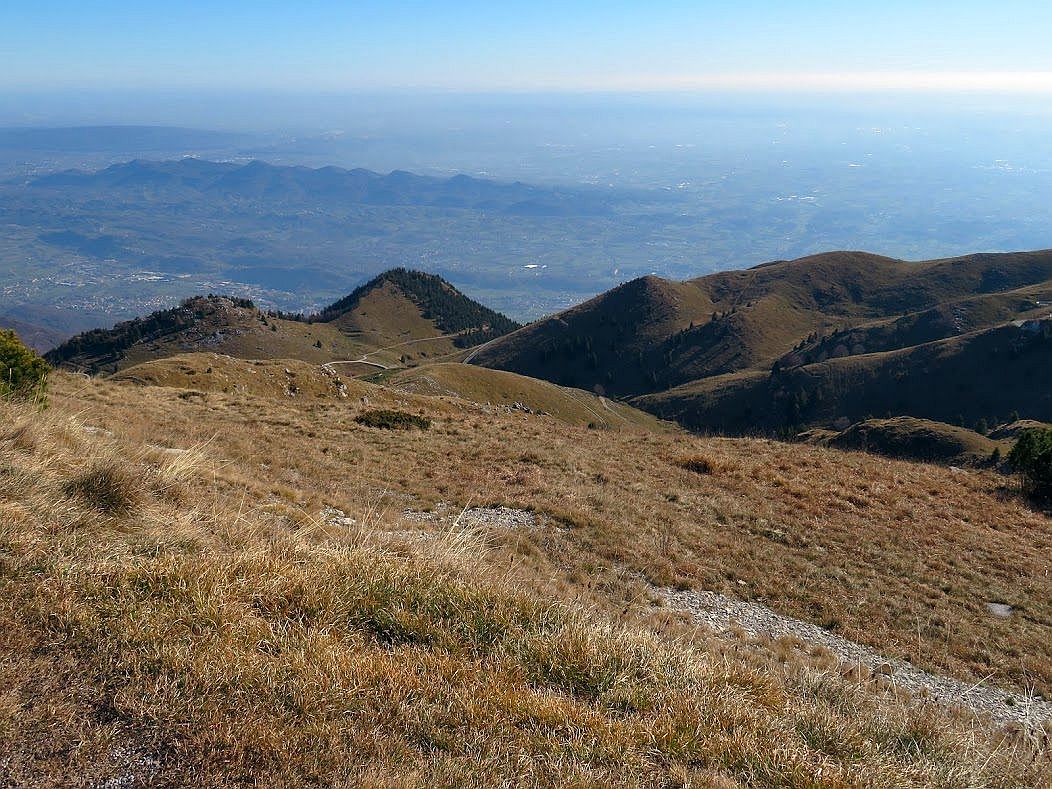
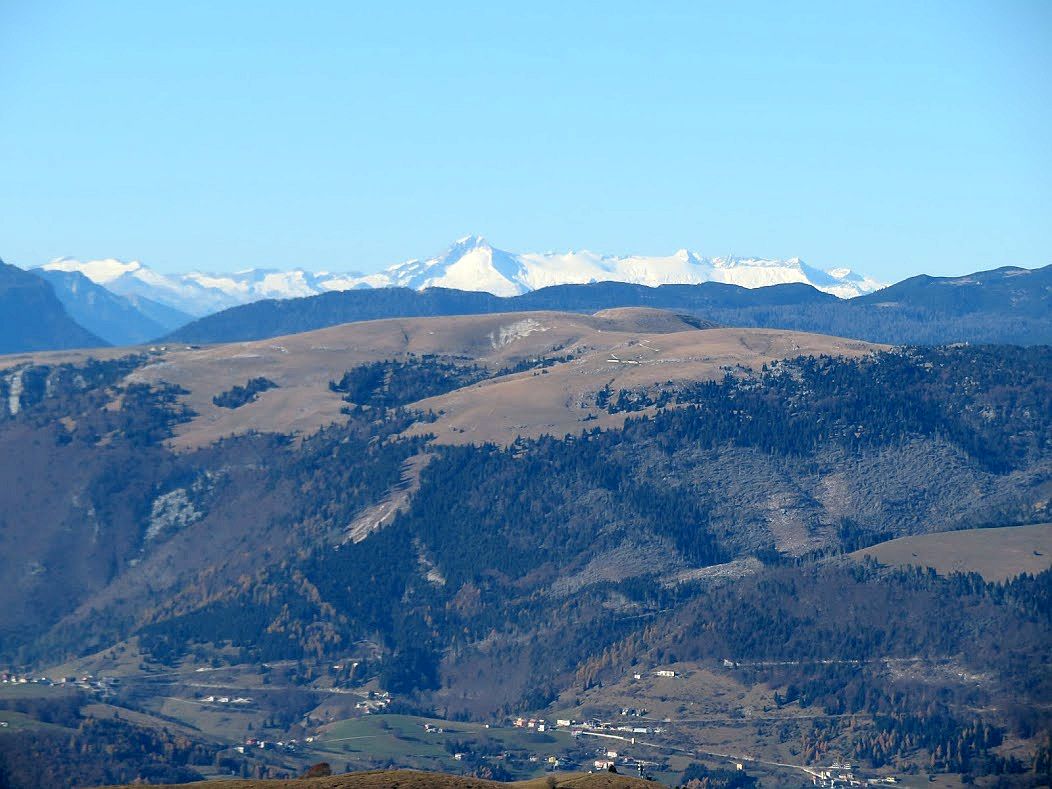
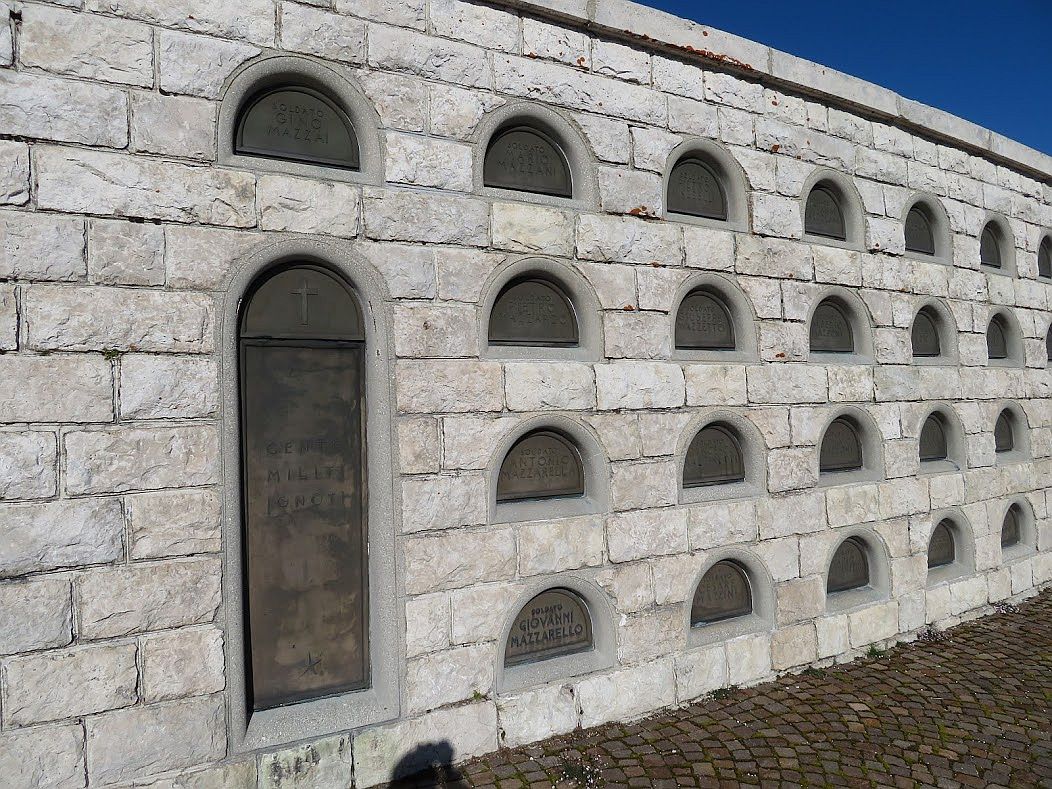
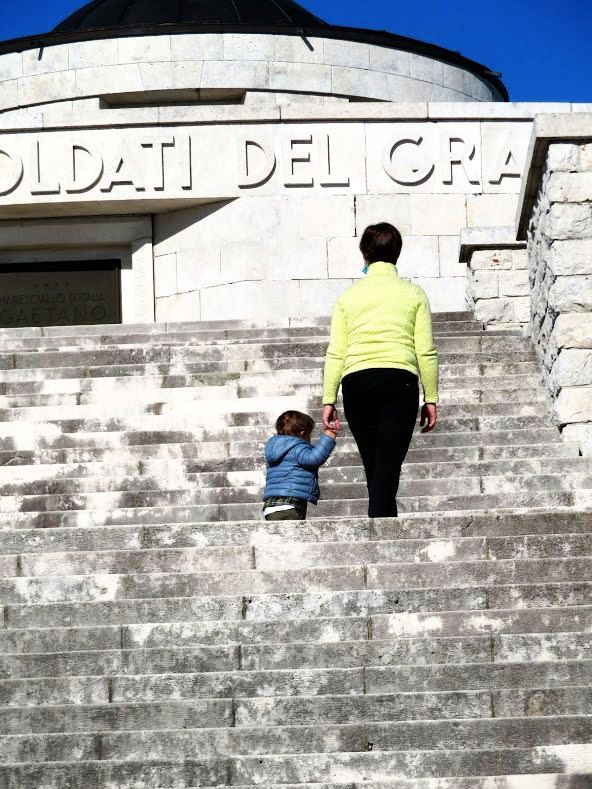
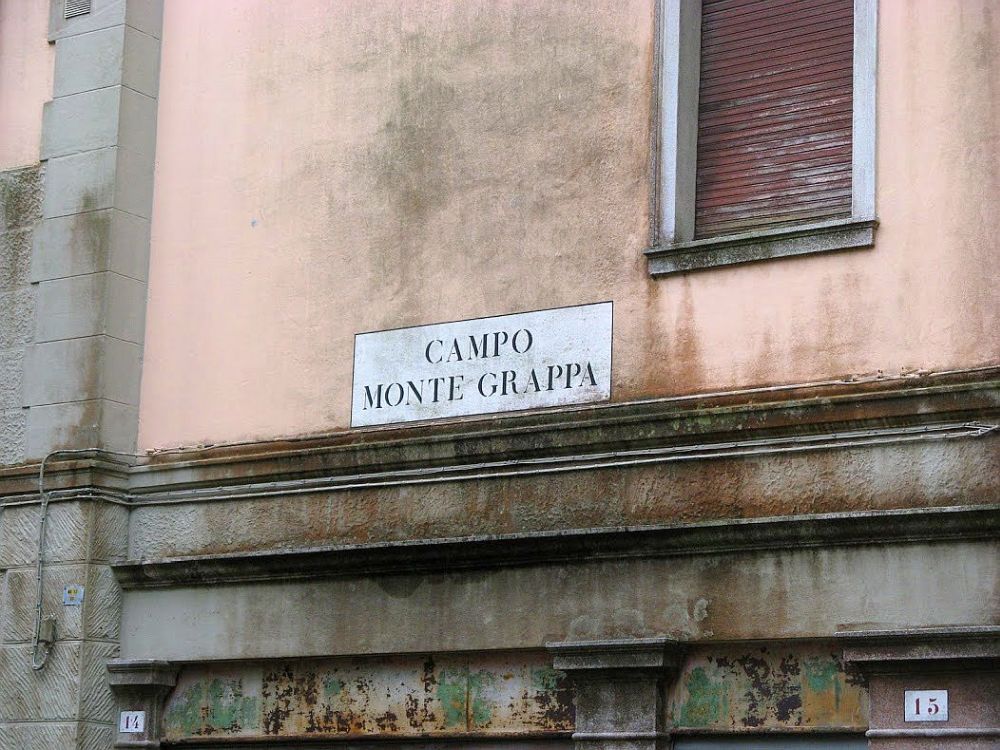
Two weeks ago — the evening of October 29 — a remarkable event passed through Venice in the form of the “Train of Memory,” a steam train that retraced the route of the train that traveled from Aquileia to Rome bearing the coffin of the nameless soldier chosen to represent all of them to his final resting place at the Altar of the Fatherland. As before, the train left Cervignano Aquileia on October 29, stopped at Udine and Treviso, and arrived at Santa Lucia station in Venice at 9:30 PM. A few hours later it departed for Bologna, Florence, Arezzo, and finally Rome.
We waited at the station, determined to see it despite a delay of 90 minutes. A ceremony had been organized, though it was less majestic than those I discovered had been held in other stations. Music, speeches, uniforms. More music. It was moving in spite of all that; for me, the emotion was compounded by the fact that Lino’s father had been a train driver in the steam era, and that Santa Lucia station was once full of puffing, gasping trains just like this one.

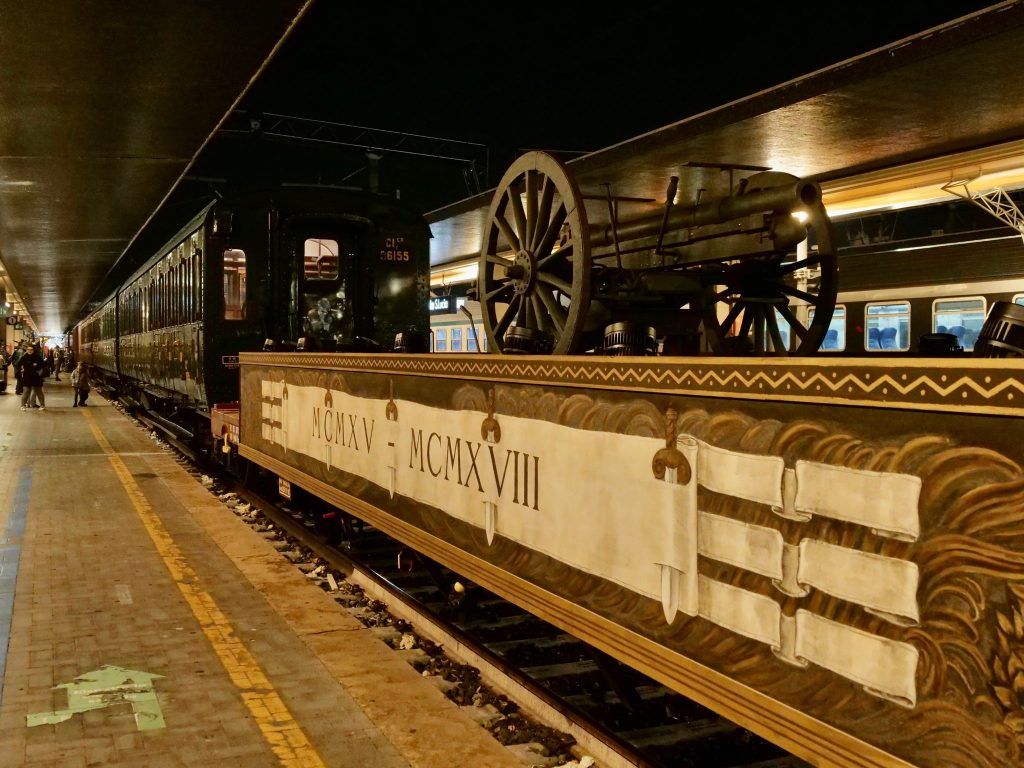
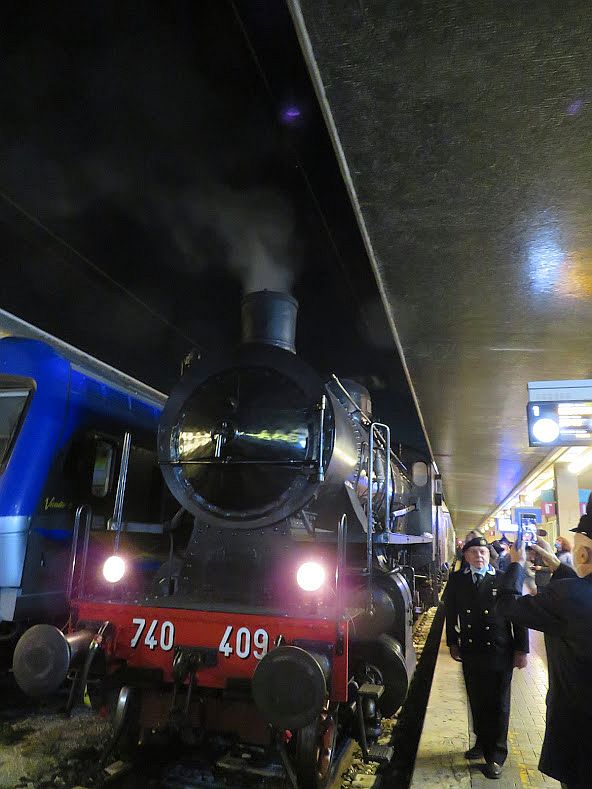
The original train was something infinitely grander and more solemn, of course. This brief film clip shows scenes from the train’s passing towns and stations on its way to Rome, and I trust that even without your understanding the narration, the images will express something of the magnitude of the experience. It seems as though everyone who saw the coffin gave it something from the depths of their heart and spirit, as each person glimpsed, in a way, their own lost soldier.
So where is the monument to the Unknown Soldier in Venice? There is only one and it’s at Sant’Elena, modestly placed amid a sort of garden, a genteel afterthought. For years this piece of stone just sat on the ground till finally a group of former soldiers managed to get it up onto a sort of pedestal. Some cities, such as Florence, organized ceremonies with the laying of a huge laurel wreath.
Here, not so much. The only wreath was placed by Daniele Girardini, president of a military history association named cimeetrincee (peaks and trenches). Not even a nod from the city government, much less a ceremony. Maybe ceremonies are empty calories, but no ceremonies are worse.

“I was always embarrassed by the words sacred, glorious, and sacrifice, ” wrote Ernest Hemingway. “I had seen nothing sacred, and the things that were glorious had no glory and the sacrifices were like the stockyards at Chicago if nothing was done with the meat except to bury it…Abstract words such as glory, honor, courage…were obscene beside the concrete names of villages… the names of rivers, the numbers of regiments and the dates.”

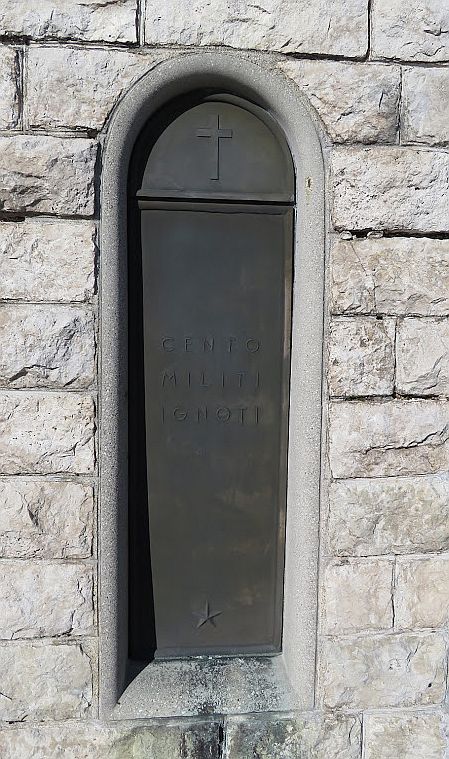
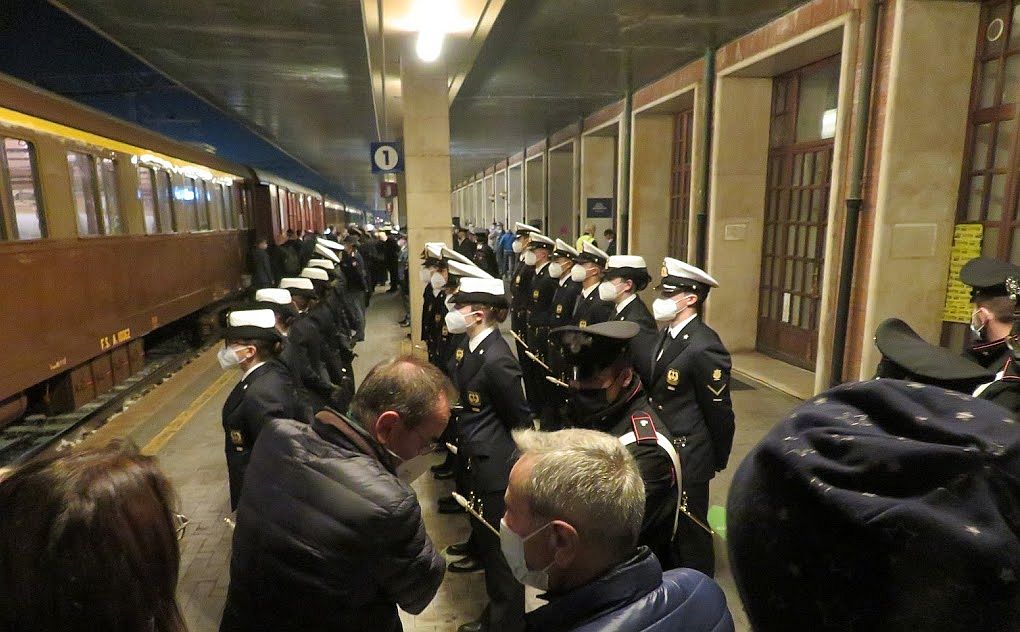
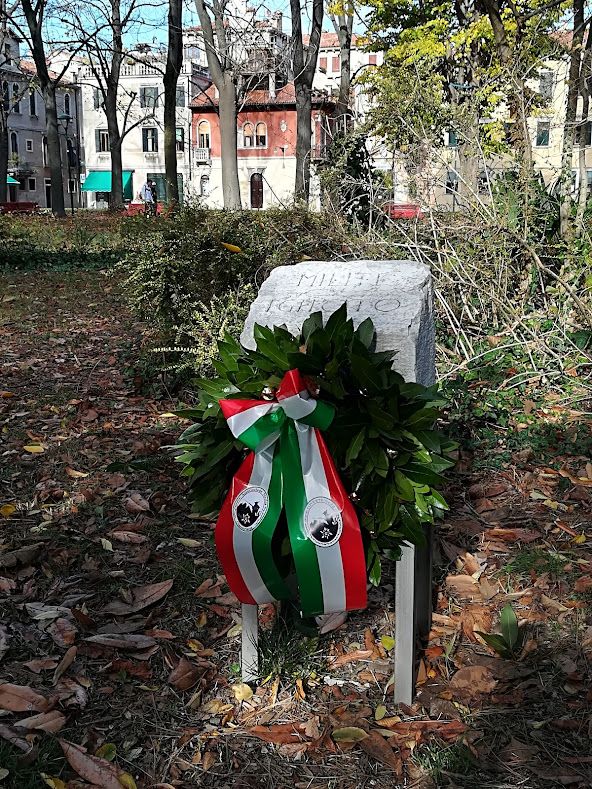

24 Comments
Thanks for this, Erla. I can’t ever “celebrate” this holiday.
I feel the same way. National Day of Mourning would be better, but I think we don’t do those anymore. For some reason.
I understand exactly what you are saying, Frances.
Well done Erla. The museum at Kobarid is devastating; all of our leaders should be forced to go. Shock therapy at the uselessness of so much carnage.
I agree about the museum, but I don’t believe our leaders can be either shocked or therapied. Of course the carnage is useless, but they’re alive, you know, so who cares. And on we go, literally.
It’s lovely to hear from you again, Erla, even though it is on such a sad subject. Here in England we have Remembrance Day on November 11th, which used to be Armistice Day too. Thankfully I haven’t known anyone who has died in conflict, but we all know someone who does. I saw a map this week of all the areas in the world which are currently affected by armed conflicts and it is really horrifying.
Lino is named Angelo for one of his uncles who didn’t come back from WW 1. His brother is named Francesco for another uncle who didn’t come back. Seems like ancient history, but it’s not.
Moving, beautiful, insightful–for an American, a whole new way of looking at Veterans’ Day. Thanks, Erla!
A suitable reminder to those UK citizens who were fooled into voting for the UK to leave the EU.
Thank you, I suppose, but I confess I’m at a loss to understand how this post relates to the UK, the EU, and/or Brexit. If you feel like explaining I’d be interested to know what your thoughts are
One of your best ‘episodes’.
Thank you.
You put an amazing amount of ‘human’ value into this one.
Brava and thank you, dear Erla. And oh, that Hemingway quote…powerful, painful, true.
What a beautiful commentary. Thank you for always bringing a real and poignant picture of Venetian life to those who love the city from far away.
I just returned from fourteen days in Rome. I’ve been there often, but now I’m older. This time, the sight of ancient roman coffins of the wealthy converted to fountains, fragments of statues of the proud in museums, fractured engraved plates from columbaria in church vestibules. Those where names are inscribed are mostly meaningless, the stories of the people long forgotten. Even the bones from the catacombs brought in AD 609 and buried under the pantheon upon its conversion to a church, have no memory or personal story beyond presumed martyrdom. In an adjacent street, Via del Seminario, is a beautiful monument to the fallen of the war to end all wars. The names are listed, but who remembers now? When I walked past, there was a young couple of tourists, she photographing him as he posed in imitation of the bronze angel above the lists of names, both oblivous to the meaning of the monument. Over in the Ghetto, people feel the stumbling stones underfoot, and glance down, clueless of their meaning. And so it continues.
My grandfather, who was born in the 1890s, had reached his 90s, and I was a young student. He said he had earnestly tried to serve in World War I, but was rejected for flat feet, deeply disappointed. Later he saw his adult daughters loose many school mates in the next war, and they married soldiers. Now the Vietnam War was raging without focus, and he said to me, “War is the greatest hoax that older generations have pulled on younger generations.” Only now do I grasp what he meant.
Today, I’m pained that the young in so many countries are retreating from democracy, leaning toward totalitarianism, cutting off communication with other countries and cultures, oblivious to history, unaware that this pattern guarantees more domestic misery and international war.
Thanks for the poignant article.
I share your thoughts. Wish they were more hopeful, but that seems to be asking a bit too much these days. Thanks for writing.
Thank you for this post. I have been to Monte Grappa twice: once in the dead of winter, which added to the emotions of the stupidity of war, and then with my son in slightly more clement weather. We both agree with the sentiments expressed by Mark and Frances.
Erla, I am so grateful for the time I was able to spend in your wonderful city. It became painful to see the changes over the years, but I do feel sorrow that I shan’t ever walk on her masegni, or delight in finding some tiny treasure that everyone passes by without noticing. I am glad to have met you, clever wordsmith. <3
Heather Cox Richardson, the American historian, wrote about the last man killed, a Canadian private, 2 minutes before the cease fire, shot in the chest by a German soldier.
Thank you for the Hemingway quote. He nailed it.
My apologies if my brief comment was unclear. I am pleased to expand on the topic. As we all know the EU developed from the initial European Coal and Steel Community, established in 1951 on the principle of supranationalism, as one of the political responses to World War II. World War I, with its fierce reparations, was a material cause of World War II. World War I was an avoidable catastrophe. One of the great successes of the EU has been peace in Europe. Those misinformed or misguided UK Citizens who voted for Brexit need reminding that UK membership of the EU has been a factor in maintaining this peace, amongst other achievements across many spheres of human activity. This is an ample reason why the horrors of The Great War should remain in our minds with the UK’s disengagement from the EU. Many congratulations on producing such an apt and moving posting. I look forward to receiving future items as a frequent visitor to other European countries, notably La Bella Italia where my heart lies, and especially La Serenissima. Cordiali saluti, Dottore Jonathan Punt, Londra.
I appreciate the clarification. I’ll try to keep up to standard in future posts, but can’t guarantee anything.
Thank you very much for this beautiful post, Erla. It is powerful and moving, the work of a real Master.
Noi siamo assolutamente d’accordo.
Buona sera da Londra.
Jonathan
Thanks, as always. But it’s not me, it’s the subject. It pretty much speaks for itself. Too bad so few people are listening.
Veramente, non importa! Grazie mille per la Sua risposta che era molto gentile da parte Sua.
Io aspetto di leggere i Suoi belli messaggi con molto piacere.
Buona sera da Londra
Jonathan
Very moving. As always, your writing makes me think and is most enjoyable!